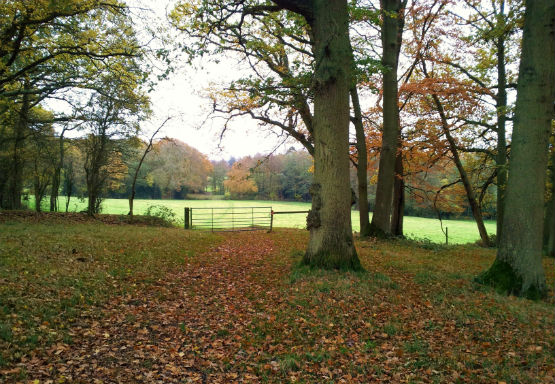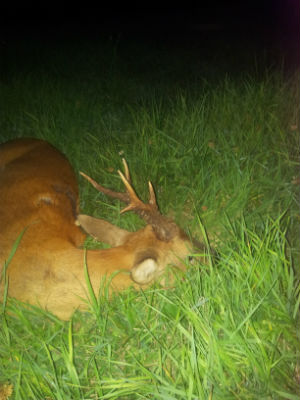“If it’s not lashing down with rain then I’m really not interested”, Matthew Rogers looks to the onset of Autumn with eager anticipation.

Hunting Roe Buck has never been my favourite stalking pursuit. In many ways this is fortunate; a lot, or rather most stalkers consider them the reason-d’être for stalking in the South East full stop, and thus we benefit from not clashing. To be more specific, when most clients are marking up their stalking calendar, I’m closing the book and tossing it aside.
I’m the quintessential miserable British sportsman – if it’s not lashing down with rain, if you can see more than fifty feet ahead of you, and if it’s above freezing... then I’m not really interested. I like to be really tested when out stalking, and I prefer the larger, more skitterish Fallow to stalk, which is often more about laying up and springing an ambush than all this climby-crawly nonsense that goes on in the summer, only to whack a deer that’s the size of my shoe and has a moustache.
 I digress. Today, I’m actually here to discuss a recent fantastic stalk I enjoyed during the middle of the 2014 Roe Rut. I elected to take one or two dates, only, and focus on a good representative animal (to contribute towards my personal goal of one taxidermy beast, male and female, from each species found in the British Isles – but more on this another day). Normally I have rotten luck during the Rut, but this was an exception.
I digress. Today, I’m actually here to discuss a recent fantastic stalk I enjoyed during the middle of the 2014 Roe Rut. I elected to take one or two dates, only, and focus on a good representative animal (to contribute towards my personal goal of one taxidermy beast, male and female, from each species found in the British Isles – but more on this another day). Normally I have rotten luck during the Rut, but this was an exception.
(Left: A fine Roe Buck taken just before last light)
After the usual ambling through fields earlier in the afternoon and with no result from the Roe call we reached the point where we were on our last field, and it was “commit or go home” time. Committed we were, and, having just moved on to the field we spied an amble looking doe out grazing on the fields. Much tentative glassing and muttering of tactics decided we would try to close the ground.
Armed with a Sako 85 in .308 calibre, what followed was the regular approach for nervous stalkers – “let’s make a few more yards” is said at the start, as if this is a Really Big Deal, before, some half an hour later and a hundred yards closed, everything is pretty much as it was when you started. The doe is now within safe shooting distance, but that really doesn’t help much.
Thus comes point of making a decision – to move up and on and push the doe away and potentially any buck that is trailing her, or to sit tight and see if the buck shows himself. With light failing how long to wait? The doe had been in play for approaching an hour now, and no sign of the buck. How unusual not to find an accompanying male hanging around at this time of year.
Slowly, the doe made her way to the tree and fence, and started to cross over. This gave us the room to move forwards, see around a little bend and across to the next field... Buck!
An excellent red coated, fine antlered beast came into view moments before he was about amble away and be lost into cover....Sticks, rifle, scope, shot – in that order, and taking about the same amount of time to execute as it did to read it (including very little time to place the shot, I should add, which was a bit hairy at the time but turned out to be effective if a little higher than optimal). It seemed a perfect example of why you should stick with a doe during the rut, because there is bound to be a buck somewhere nearby that you just haven’t seen yet.
So all in all, a great representative Roe Buck for the wall and with the rut now more or less over and with all said and done, it’s time for me to consider the upcoming autumn winter season and prepare for my favourites. If you have been out hunting Roe this summer, I do hope you enjoyed it, South East England has shown some great animals and proves itself once again to be a premier hunting destination.
To read more from Matthew about stalking in the Autumn, follow this link: fallow-buck-stalking-during-the-rut



















